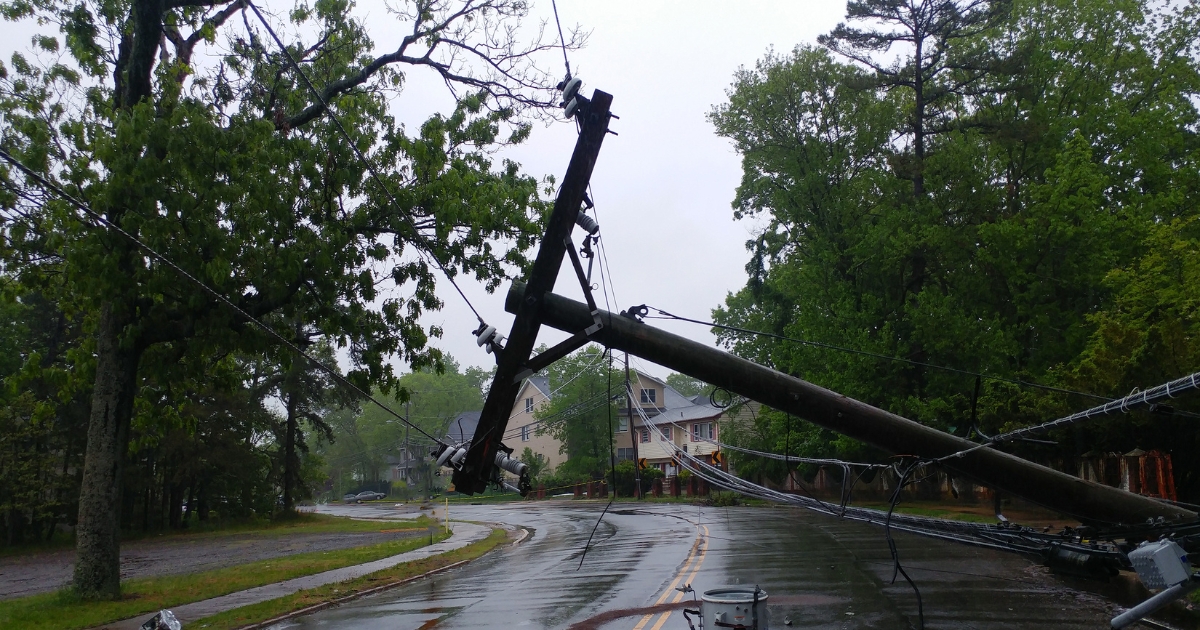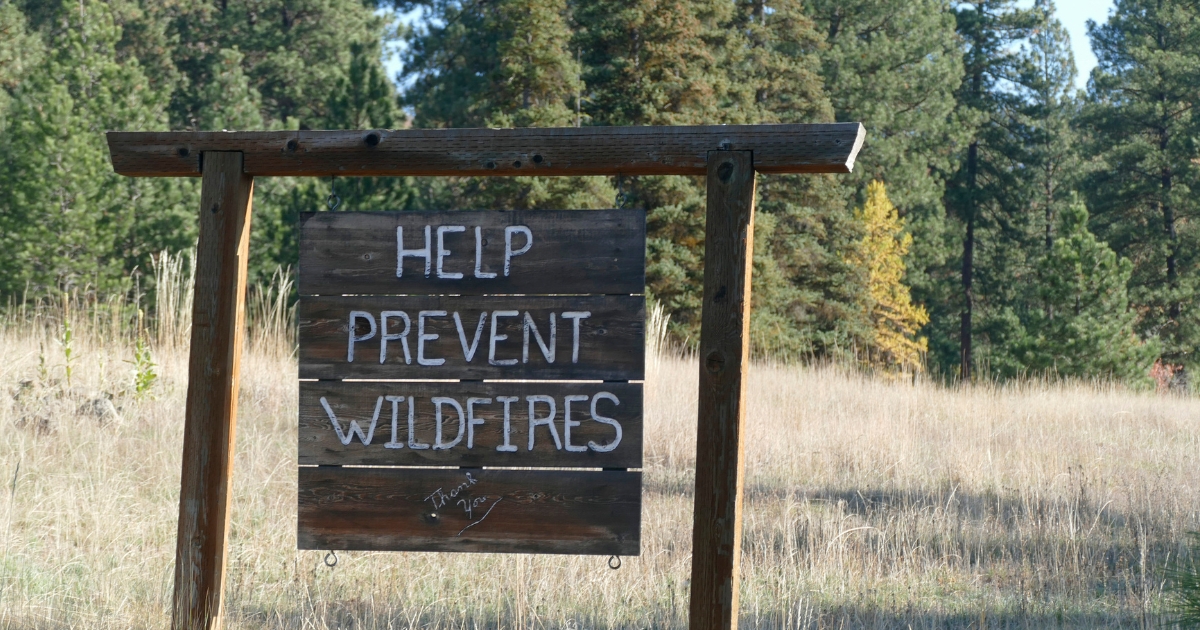Crisis Leadership During a Community Disaster
Let’s discuss four cornerstones that can strengthen the foundation of your team’s crisis leadership skills. You’ll learn key elements of crisis leadership that should be top of mind when preparing individuals to lead through a community disaster, including:
- Creating a preparedness plan to reduce stress and increase effective action in a crisis
- Honing soft leadership skills like communication and empathy to maintain connection and cohesion
- Establishing channels for clear, honest communication that reaches from top to bottom, and bottom to top
- Taking a service- and solution-oriented approach to leadership, rather than a command-and-control approach

Four Cornerstones of Effective Crisis Leadership
1. Prioritize Disaster Preparedness
Effective crisis leadership starts with having a clear plan that provides structure during disaster response. This plan should lay out the steps in the process of reentry and recovery.
Disasters disrupt the systems and infrastructure communities rely on to function properly. They affect community members as well as individuals responsible for recovery efforts, including leaders themselves. It’s critical that leaders have a plan to bring some level of order to the chaos that can ensue in the wake of disaster. This will help them confidently guide their teams and the community through challenging events.
Creating a disaster-resilient community requires leaders to look at the long view when it comes to disaster planning. They need to think about the entire recovery process before disaster strikes. Why? When you’re in an emergency situation, it’s nearly impossible to take the time to create long-term strategies. To prepare for disaster, communities need to complete a hazard, risk, and vulnerability analysis (HRVA) and update their emergency management plan (EMP), which should include a re-entry and recovery plan.
Leaders can use a Disaster Recovery Framework to establish a post-disaster action plan that outlines the exact steps that the emergency management team, industry representatives, and supporting community members need to take to initiate and work toward recovery.
Kick-Start Your Disaster Preparedness Planning
Small teams with limited internal resources can benefit from bringing on an emergency management specialist to ensure that they have an emergency response and recovery framework in place before disaster strikes. Rebecca Innes Consulting (RIC) can provide teams with a tailored Disaster Recovery Framework that addresses their community’s unique social, cultural, and infrastructural needs in the event of any kind of disaster.

Get a done-for-you Disaster Recovery Framework →
2. Cultivate Psychological Safety and a Sense of Hope
Disasters are destabilizing, which leads to feelings of uncertainty and fear. Having a plan can help leaders give reliable directions, reducing the unknowns in an emergency situation.
In addition to strategic thinking and decision-making, crisis leadership requires individuals to manage both disorder and distress—including their own—and offer reassurance through genuine empathy, connection, and thoughtful action. Leadership researcher and psychiatrist Gianpiero Petriglieri refers to this skill as holding: the ability to instill a sense of confidence and cohesion amongst the individuals responsible for the demanding work of response and recovery—which includes the community members affected by disaster.
Leadership during crisis means empowering individuals to work cooperatively, draw on their inner and collective strength, and collaborate towards a shared goal. Leaders can help their teams and community achieve this by strengthening trust, which requires psychological safety, and morale, a positive feeling that individuals and teams have what it takes to overcome challenges.

Explore crisis leadership training opportunities for you and your team →
3. Communicate Strategically
Leaders can practice holding by establishing open lines of communication throughout the emergency management team and across the community. Holding means creating a space where both community and team members can ask questions and voice their concerns, and see that action is taken based on their feedback.
Leaders can start conversations with the community as they build their disaster preparedness and recovery plans to understand what’s most important to individual members and groups. This ensures that response and recovery strategies are grounded in the actions that will make the most difference to residents and responders.
It’s also essential for leaders to establish a single source of truth that teams and community members can rely on for information throughout the response, re-entry, and recovery processes. Leaders need to be aware of how messages about the event and response and recovery efforts are communicated via both social and traditional media. Part of emergency preparedness planning should include guidelines for both public and internal communication.
Emergency management typically uses a hierarchical chain of command. Using this organizational structure means that instructions from the top may not include perspectives from those at the bottom of the hierarchy—those who have boots on the ground and community members going through the crisis. Good crisis leadership opens pathways for important information from all levels to reach decision-makers in a timely manner. This creates an interconnected chain of responsibility where the relationships are less about control and more about cooperation.

Uncover gaps in your emergency plans through community engagement →
Be Present and Honest
Research shows that it’s not helpful to simply tell communities and teams that everything will be alright. Leaders who are honest about what they don’t know while clearly communicating the steps being taken to solve a problem, and the rationale behind them, have the greatest success in managing crises.
Trust is at the core of effective leadership during a crisis. One of the ways leaders can maintain the trust of those they lead is by approaching crisis leadership with a service and solution-oriented mindset, rather than an authoritative mindset. Leaders throughout the chain of responsibility must demonstrate that they care about and are willing to respond directly to the needs expressed by those closest to the disaster. In some cases, leaders must join responders and community members in their recovery efforts to fully understand the experience and make decisions based on the reality of the situation.
Learn more about taking a human-centred approach to emergency management →

Improve Your Crisis Leadership Skills with Tailored Training
Prepare your leaders to tackle the challenges of community disasters with RIC crisis leadership training. RIC is an emergency management specialist team with expertise in preparedness and recovery planning. They can provide training tailored to your community’s unique needs based on best practices and their wide-ranging experience helping communities of all types manage disasters.
Learn more about taking a human-centred approach to emergency management →
Book a consultation →
Additional Sources
Petriglieri, J. L. (2015). Co-creating Relationship Repair: Pathways to Reconstructing Destabilized Organizational Identification. Administrative Science Quarterly, 60(3), 518-557. https://doi.org/10.1177/0001839215579234
RIC Blogs
Supporting Disaster Preparedness in Indigenous Communities
Indigenous Peoples are disproportionately affected by disasters like floods and wildfires. As weather patterns shift and annual disaster seasons become the norm, the effects of climate change on Indigenous communities in Canada are becoming more severe. In 2023, over...
Four Common Gaps in Root Cause Analysis Methods in After Action Reports
Each community disaster is a learning opportunity. As disasters become more frequent, leaders need a system to assess what happened and how to improve. This will help strengthen their disaster preparedness plans for the future. Completing an incident analysis and...
When to Hire an Emergency Preparedness Planning Expert
Emergency preparedness planning is essential for communities as the risk of experiencing disaster increases. Events such as wildfires, flooding, and extreme weather are now regular occurrences in communities across Canada. The continued expansion of industrial...
Disability and Disaster Management
In an emergency, no one should ever be left behind. Emergency response plans must be inclusive and provide strategies for supporting every individual in your community—including those with disabilities. When it comes to disability and disaster management, most of the...
Four Barriers to Community Disaster Resilience
Long-term community disaster resilience hinges on effective leadership, teamwork, and project management. In the wake of a disaster, individuals across organizations, levels of government, and industry sectors as well as members of the community itself must work...
What is a Disaster Recovery Framework?
A disaster recovery framework outlines your community’s plans for long-term resilience in the wake of an emergency such as a fire, flood, severe weather, or chemical spill. Disasters disrupt many interconnected parts of a community—from infrastructure to essential...
How to Take a Holistic Approach to Your Disaster Recovery Plan
Emergency preparedness and recovery planning create stronger communities that are more resilient to the impacts of disaster. However, to see the benefits of a disaster recovery plan, emergency managers need to take a holistic approach to their risk assessment,...
What it Means to Build a Disaster-Resilient Community
Resilience doesn’t look the same for every community. Those in rural areas have different resources, needs, and cultural values than communities in urban centres. Indigenous communities have important traditional relationships with the land they live on, which also...
Three Critical Oversights in Emergency Planning
Effective response by an emergency management organization (EMO) is dependent on strong relationships. Emergency planning involves a highly complex network of organizations, businesses, teams, and individuals. Successfully planning for emergencies caused by disaster...
Five Keys to Securing Disaster Financial Assistance
Securing funding for disaster recovery can be a challenge for small emergency management teams, especially those in Indigenous communities. In addition to identifying funding options, teams are often faced with bureaucracy and a heavy administrative burden as they...



















